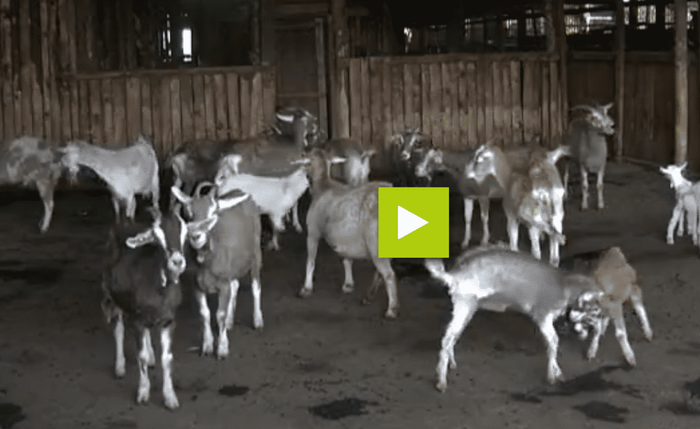Women across Africa like rearing goats because they are easy to manage in a small piece of land. Goat milk also fetches higher price in the market, its very nutritious and good for children and elderly people.
For dairy goats to produce a lot of milk they need proper feeding. Well fed goats grow faster and have a higher chance of producing milk. Fodder helps satisfy part of their needs in energy, proteins, vitamins, and minerals. Fodder includes grass, maize stalks and crop residues, banana leaves and scrubs. Dried banana stems, sweet potato vines, eaves from cow peas, beans, grevillea help increase milk production. Soya bean and fish meal and cotton seed cake are good sources of protein often found in concentrate feed. Fodder should be dried for 3 days before feeding goats to avoid diarrhoea. The goats should be supplied with clean water as it helps digest fodder and increase milk production.
Precautions for dairy goats
Left over feeds should be removed and trough should be thoroughly cleaned before bringing fresh feed because goats may have urinated on it .
Feeds should be placed in raised trough to avoid contamination. Harvested fodder should be covered to remain dry in case it rains. Poisonous plant should not be fed to animals as they make the goats bloat or die. Mixing soda ash and water can help treat stomach bloating.
Onions and kale leaves should not be fed to goats as they will give odour to the milk. Fodder should be preserved to be used during hunger seasons.
Feed amount
When dairy goats are older more foods should be given to maintain their good health. If pregnant, feeds should be mixed with 3 hands full of dairy meal in the last 3 months of pregnancy in order to get a healthy kid and lots of milk. For a milking goat, 3 hands of dairy feeds is added to its normal food ratio to maintain milk yield.




















One Response
Very interesting content